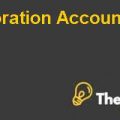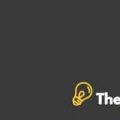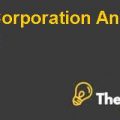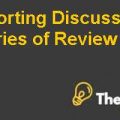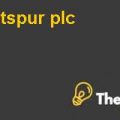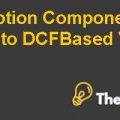
Question: 1. By using Exhibit 1 data, prepare the lessee accounting illustrations Monet requested How well the Chief accountant’s assumed lease characteristics line up with the company’s past lease term experience?
Answer:
Leases can be defined as a contract by which one party transfers the right to use its asset to another party against the periodic rentals. There are major two types of lease according to the IAS 17: Finance and Operating Lease. The accounting under the requirements depends upon the classification of the lease. Under the previous IAS 17 Leases by International Accounting Standards Board (IASB), in operating lease, the lessee does not need to recognize the leased asset in their Balance Sheet. In 2010, August, the International Accounting Standards Board issued an Exposure Draft (ED), amending various changes to the IAS 17 “Leases”. The overall net effect of the new ED was that lessees would have to recognize a “right-to-use” asset and a lease liability in term of Lease Interest for all of their long and short term leases in the Balance Sheet. On the other hand, “right-of-use” asset would be amortized against the basis of the lease term or the life of the leased asset, whatever is shorter. Since the BonneSante is engaged in Operating lease agreements with their Lessors that gives them a “right-of-use” of Retail Outlets and Trucks.
Since, the revised Exposure Draft states that the Contracting parties must agree on 10 years lease term at least, so the BonneSante must cancel out their lease agreements of less than 10 years lease term and revised them as per the new requirements. The lessee shall report cash payments against the lease payments as financing activity in the Statement of the Cash Flows but shall present separate from other financing activities.
Question 2: As a potential BonneSante investor or creditor, how would you view the liability for future lease payments BonneSante would have to record under the ED’s lessee accounting proposals? Is it like regular bank debt? If not, what is it? Would you include 100 percent of the recognized amount in a debt-to-equity ratio?
Answer:
Before the issuance of the new Exposure Draft, the Company maintained their Lease Records as per IAS 17 “Leases” and they were only recognizing the Lease rental payments in Statement of Comprehensive Income as an expense against the lease agreement, i.e. there wasn’t any recognition criteria for “right-of-use” asset. So the investor/creditor and potential investor/creditor were unable to classify the liability against the lease rental payments from the Statement of Financial Position, hence they were facing problems in determining the Debt-to-Equity ratio of the company.
But with the issuance of the new Exposure Draft in August, 2010 the measurement criteria as well as recognition criteria have been revised. Now following are the revised measurement and recognition criteria from the lessee’s point of view:
At the introduction of the lease, a lessee shall recognize in the SOFP a “right-of-use” asset and a liability to make Lease Rental payments. A lessee in a contract shall recognize the following areas in the Statement of Comprehensive Income:
- Interest expense, i.e. the liability to make lease rental payments.
- Amortization expense of the right-of-use asset, amortized over the life of lease agreement or over the useful life estimated against the respected asset, whichever is shorter.
- Revaluation gains or losses, if any, as stated in IAS 38 “Intangible Assets”, when a right-of-use asset is revalued.
- Any increase/decrease or expected change in the obligation to pay lease payments as a result of the re-estimation of the expected payments under term option or the amount of contingent rentals and scrap value guarantees relating to current or prior periods..
- Any impairment losses on a right-of-use asset.
INITIAL MEASUREMENT:
At the date of origination of the lease, a lessee shall measure:
- The financial obligation to make lease payments at the present value of the future lease payments, which must be discounted by using the rate that the lessor charges to the lessee or lessee’s incremental borrowing rate.
- The right-of-use asset at the amount of the financial obligation to make rental payments, along with any initial direct costs incurred by the lessee
- A lessee shall evaluate the lease periods by estimating the chances of occurrence for each possible term, holding into account of the issue of any alternatives to extend or to terminate the rental.
4. A lessee shall evaluate or calculate the present value of lease payments payable during the lease period, with the help of all relevant data available. The expected result is the present value of the lease payments payable, a lessee shall include......................
This is just a sample partial case solution. Please place the order on the website to order your own originally done case solution.
IASB and the FASB has proposed new lease accounting rules and the owner of French fast food chain is concerned about the impact on the balance sheets of the company. "Hide
by David F. Hawkins Source: Harvard Business School 15 pages. Publication Date: November 24, 2010. Prod. #: 111063-PDF-ENG

